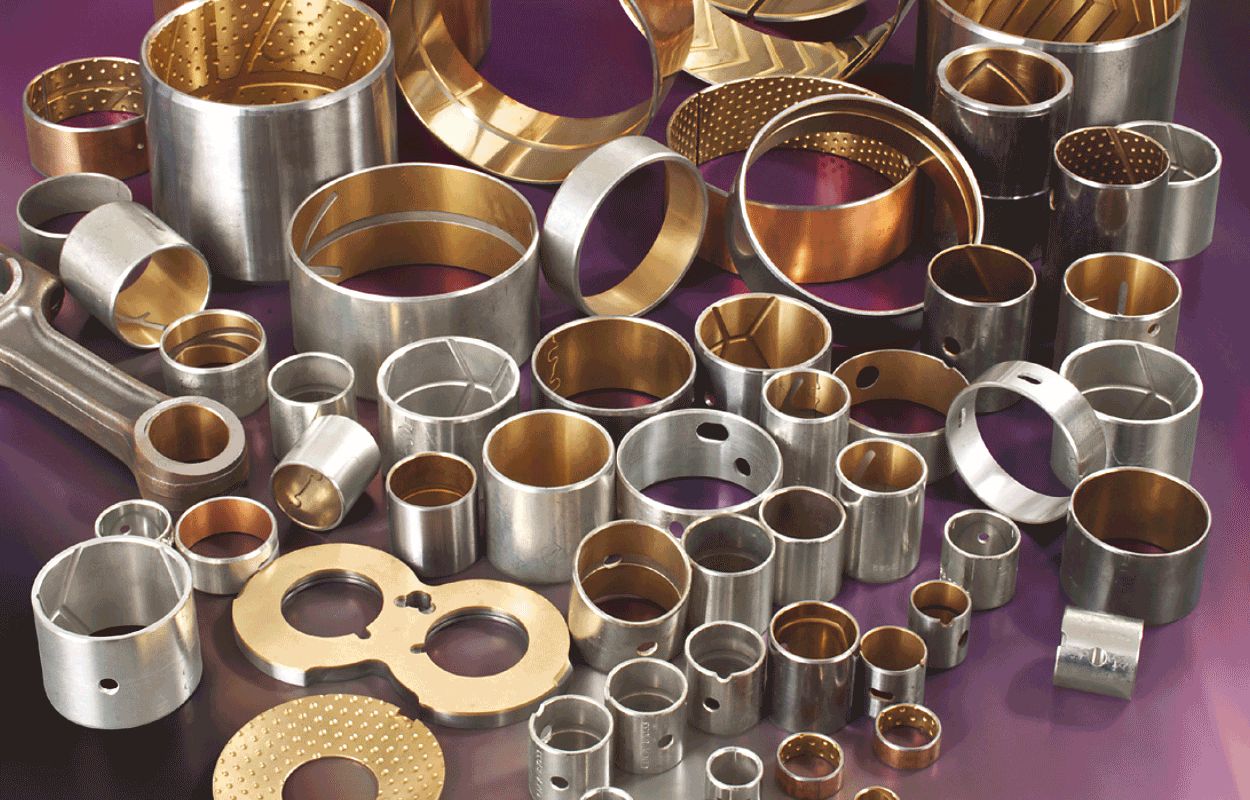JF803 Wrapped Bronze Bimetal Bearing ISO 3547 DIN1494 Standard Type
with V oil groove
JF-803 bimetal bearing is made of steel sintered with CuPb10Sn10 or
CuSn6Zn6Pb3 as a lining layer.This type of bushing show its best
performance among bushings made of Cu-lead alloy material in this
product range.It suits most for middle speed and high impact
conditions.Its application including balance suspensions of
heavy-duty trucks, track roller of bulldozers,auto chassis etc.
| Lead bronze alloy | CuPb10Sn10 or CuSn6Zn6Pb3 |
| Load capacity | 65N/mm² | Harderness alloy | HB70~100 |
| Temperature Max | 260℃ |
The main applications are in Automotive and Industrial products.
Automotive: McPherson struts and shock absorbers, doors, bonnets and tailgate
hinges, steering columns, clutches, gearbox selector fork guides,
wiper arms, power steering pumps, pedal bushes, ABS equipment, etc.
Industrial: Aerospace, agricultural equipment, construction equipment,
material handling equipment, forming machines-metal, plastic and
rubber, office equipment, medical and scientific equipment,
packaging equipment, pneumatic and hydraulic cylinders, pumps and
motors, railroad and tramways, textile machinery, valves, etc.
Bimetal Bushings‘ applications for King pin, Spring eyes, Trunion,
Piston pin, Rocker arm, Connecting rod, Transmission system,
Distributor, Clutch, pilot, Starter, Generator, Oil pump, gear
pump, Water pump, Cam shaft, Intermediate shaft, Balance shaft.
Bimetal Washers’ applications for Main bearing, Cam shaft, Crank
shaft, Distributor, Transmission system, Oil pump, Ram pump, vane
pump and other applications.
Engine Bearings’ application for Cam shaft, Crank (main), Con. Rod
(big end) and other applications of engine bearing.
Features:
- An inner liner prevents wear through - With a dual-layer design (whether metal or a metal/polymer mix),
the strength of the material is dispersed evenly throughout the
entire bearing unit. Why is this important? The unit will have the
same thickness and same strength to prevent weak spots and wear
through. Two layers result in a more reliable performance for a
longer service timeline.
- More layers protect against debris - As we discuss in our debris contamination is a leading cause of
bearing failure. Debris can be generated from machining such as
shavings and even environmental contamination. A bimetal design has
more surface area to resist debris. And in the rare case of a liner
wear, the secondary layer is also lubricated to protect expensive
manufacturing equipment from damage.
- Lubrication x2 - (whether too much or too little,) is the number one cause of
bearing failure. A bimetal or dual design provides an extra layer
of lubrication protection. With more lubrication, there’s less heat
generated, and less friction. Well lubricated bearings are also
well designed for extended service life.
- Durability and strength - Sintered bearing liners bring different levels of durability and
fatigue strength. For instance, auto engine and transmission
applications have primarily low loads yet high rotating speeds. A TriSteelsteel-backed bearing with a CuPb30 liner will give a load capacity
of 3600 psi, speed to 2900 fpm Hardness: HB30-45, Temperature: -40
to +325F. 0.08-0.16, plus low friction and good dry breakaway
properties.
Tech. Data
| Max.Load | Static | 250N/mm² | Alloy Hardness | HB 60-100 |
| 140N/mm² |
| Temp | -40℃~+250℃ |
| Coefficient of friction | 0.05~0.12 |
| Max.Speed | Max.Speed | 2.5m/s | Thermal conductivity | 60W(m*k)-1 |
| Max.PV | Max.PV | 2.8N/mm²*m/s |
| Shear strength | Shear strength | 170N/mm² |
| Coef.of yhermal exoansion | 14*10-6K-1 |




